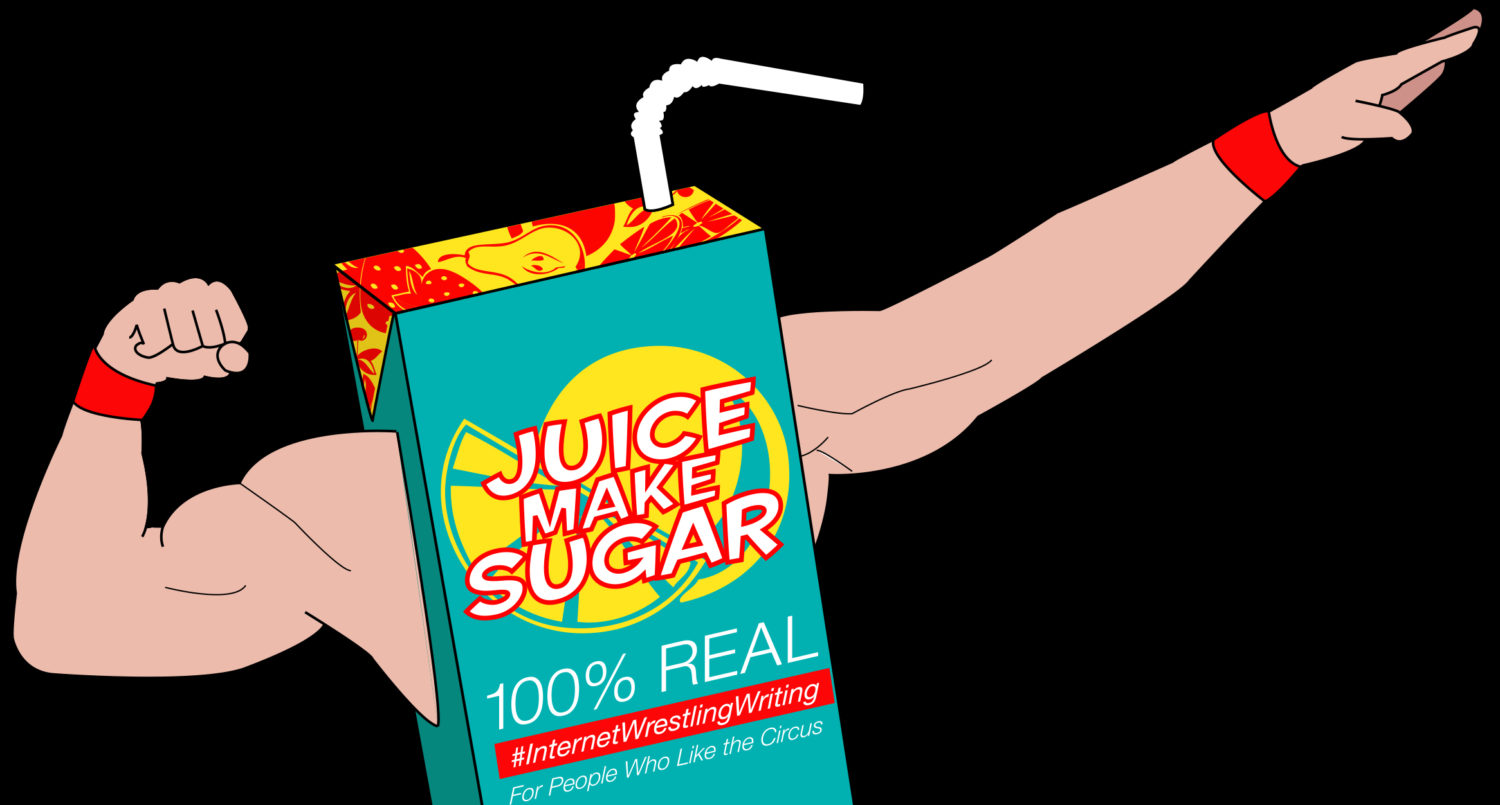After having so much fun with the stables last month in celebration of the Survivor Series, we’ve decided to turn this December — and all Decembers in perpetuity — into Promotions Month. This week we have Paul Heyman’s Extreme Championship Wrestling. This is the First Day of #ECWWeek, the fifteenth installment of our (patent-pending) Juice Make Sugar Wrestler of the Week Series. As (almost) always, we’ll start by making ECW a Promotion You (Should) Probably Know Better. Tomorrow, we’ll give you the finer points of the company’s oeuvre with some Essential Viewings. On Wednesday, we’ll discussing the idea of ECW and Another Fan’s Treasure. After Hump Day we’ll be quenching your thirst for Listicles with a Juice Make Sugar Top 10 List, before summing everything with a “Difference of Opinion” that will likely be closer to a “Difference in Levels of Disdain”. Let’s get Extreme?
There’s no such thing as indifference when it comes to Extreme Championship Wrestling. It’s a promotion that many fans choose to look back on through rose-colored glasses, as the company that changed the face of wrestling. Nearly as many consider it the group that ruined it. They’re both probably right.
ECW started generating buzz with wrestling fans far before it went extreme. Eastern Championship Wrestling had a reputation for strong shows, amazing athleticism, and of course, some wild brawls. And where there’s smoke, there’s fire.
Enter Paul Heyman—with a giant can of gasoline.
Paul Heyman and his group of circus freaks did everything they could to turn the volume up to 11, and get the attention of the wrestling world. It worked. Violent, bloody brawls. Colorful but (mostly) believable — or in the case of Amish Roadkill, so completely non-sequitur that it didn’t matter — gimmicks. Logical storylines.
The company grew to amazing heights, despite ultimately appealing to an incredible small niche — fans of “hardcore” or “garbage” wrestling. Some will say that ECW was more than that, and it was for a short period, but make no mistake: ECW’s shadow did as much damage to the careers of people like Chris Jericho and Dean Malenko as ECW the company helped the careers of people like Chris Jericho and Dean Malenko by bringing them into the American spotlight in the first place.
But it wasn’t all bad, and ECW’s unique (to American audiences, anyways) style helped save American wrestling. The then-WWF was having extreme difficulty finding its identity in post-Hulk Hogan world in 1995 and 1996, struggling to catch up to WCW in the wrestling war. WWF couldn’t touch the nWo. The rough style and risque promos it stole from a little promotion in Philadelphia helped turn business around.
Less-than-PG matches and promos made legends of a million promos in WWE. Triple H went from midcard to main event thanks to the crude antics of D-Generation X and Mick Foley will never escape the clip of him being thrown from the Hell in a Cell through a table no matter how many New York Times best sellers he writes. Forget Austin 3:16—Austin passing out to the Sharpshooter, while wearing a crimson mask, made him a star. The list goes on.
Without ECW’s influence, WWF might not have survived. Considering WCW’s awful business practices bankrupted the company a few years later, pro wrestling as we know it now could have died more than a decade ago. Instead, ECW gave WWF an identity to call its own, and to grow upon. In a way, ECW saved WWF. ECW saved pro wrestling, at least when it wasn’t trying to destroy it.
While the land of extreme may have provided an unintentional safe haven for the pro wrestling industry, it was anything but for pro wrestlers. Extreme Championship Wrestling introduced a lot of dangerous trends to American pro wrestling, pro wrestlers, and pro wrestling fans. Crazy bumps and “extreme” violence stopped being special, and became commonplace. A Muta-level blade job became just another spot. Proper selling went out the window, in exchange for rapid-fire spot exchanges (still the norm on the indies). And in a post-Benoit world, we don’t need to go too far in depth on the consequences of too many unprotected chair shots and undiagnosed head injuries.
ECW made all of this commonplace, to a dangerous degree. To quote JMS Internet Technician Daron “Action” Jackson, those unprotected chair shots became the equivalent of dropkicks, and fans forgot how to appreciate good, technical wrestling. They started refusing rest holds, or any slowdown in the action whatsoever. It familiarized the crowd with three of the most offensive chants in all of professional wrestling: “you can’t wrestle,” “you fucked up,” and “boring.” ECW ruined pro wrestling – and its fans. It’s taken nearly a decade (and a lot of PG programming) to reverse the damage done at the ECW Arena.
ECW had its pros and cons, ups and downs, stars and flops. And despite catering to a very niche audience, the company’s impact on pro wrestling was vast and pervasive. While that impact helped to revive a mainstream love of pro wrestling, it also did irreparable damage to the industry, the workers and the fans.
It’s why fans look back on the company with, pardon the pun, such extreme feelings. It’s easy to love the group that changed the face of pro wrestling and brought genuine excitement to the product. And it’s just as easy to loathe the promotion that helped teach pro wrestling fans to hate professional wrestling.

